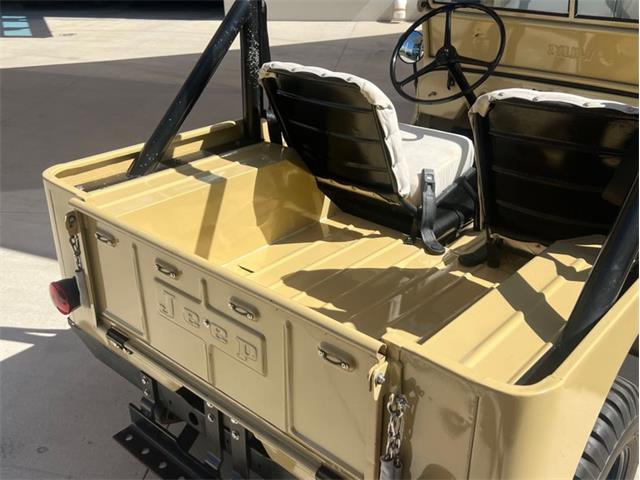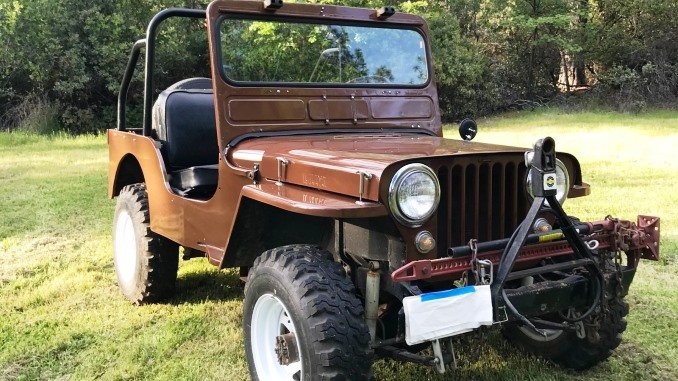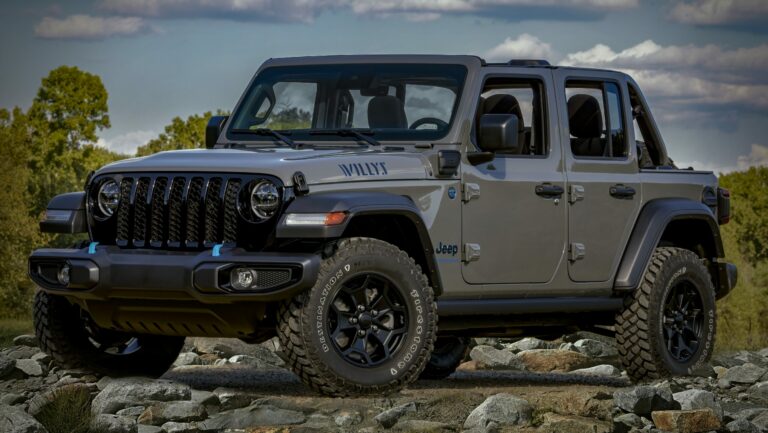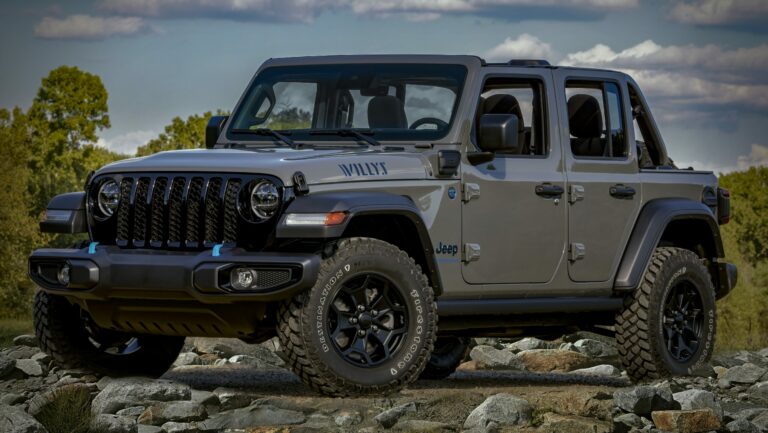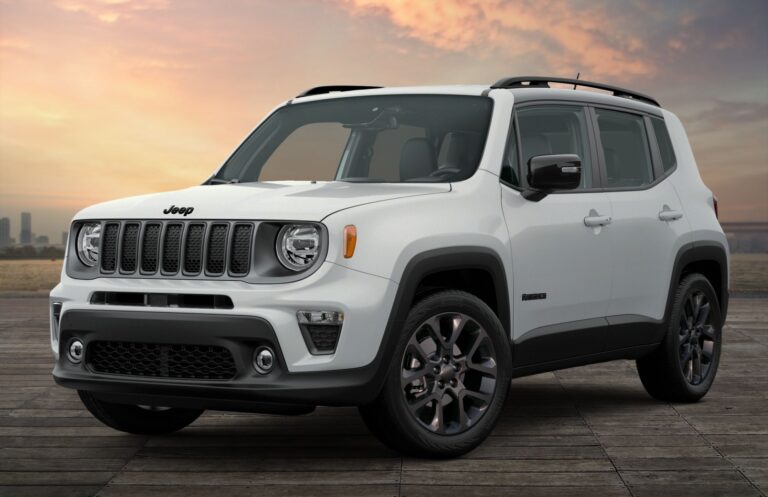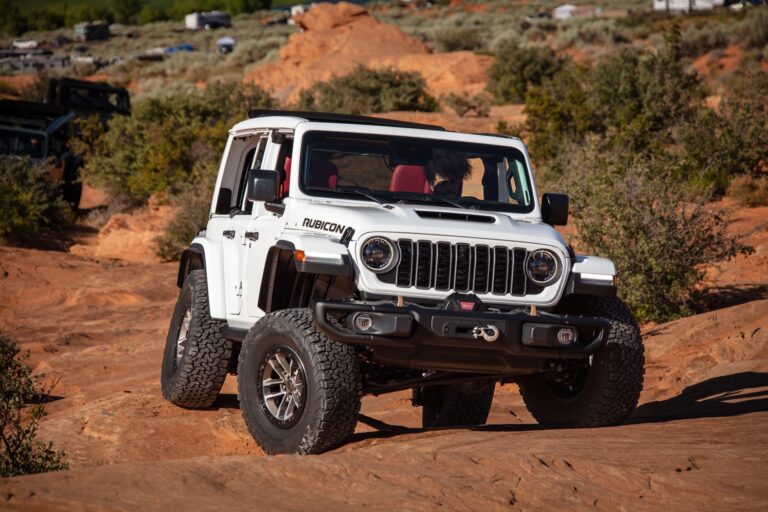1948 Jeep Willys For Sale: Your Guide to Owning a Piece of American History
1948 Jeep Willys For Sale: Your Guide to Owning a Piece of American History jeeps.truckstrend.com
The rumble of a flathead engine, the iconic seven-slot grille, and the unmistakable silhouette – these are the hallmarks of the Willys-Overland Jeep, a vehicle that transcended its military origins to become a global symbol of rugged utility and adventure. Among the most sought-after civilian models is the 1948 Jeep Willys, a post-war workhorse that solidified the Jeep’s place in American culture. For enthusiasts and collectors alike, the prospect of a "1948 Jeep Willys for sale" isn’t just about acquiring a vehicle; it’s about investing in a tangible piece of history, an analog machine from a bygone era that still commands respect and delivers an unparalleled driving experience.
This comprehensive guide is designed for anyone considering purchasing a 1948 Jeep Willys, offering insights into its legacy, what to look for, the buying process, and the joys and challenges of ownership.
1948 Jeep Willys For Sale: Your Guide to Owning a Piece of American History
The Enduring Legacy of the 1948 Willys-Overland Jeep
Born from the crucible of World War II, the Willys MB Jeep proved indispensable on battlefields worldwide. As the war concluded, Willys-Overland recognized the immense potential for a civilian version. The result was the CJ (Civilian Jeep) series, starting with the CJ-2A in 1945. The 1948 model year falls squarely within the CJ-2A production, making it a direct descendant of the legendary military vehicle, albeit with refinements for civilian use.
The CJ-2A, and by extension the 1948 Willys, was marketed as "The Universal Go-Getter," emphasizing its utility for farmers, construction workers, and adventurers. It featured the reliable "Go-Devil" L-head four-cylinder engine, a robust three-speed manual transmission, and a two-speed transfer case for four-wheel drive capability. Simple, durable, and infinitely versatile, these early civilian Jeeps helped shape the nascent SUV market and became an integral part of post-war American life. Owning a 1948 Willys is to connect with this pivotal moment in automotive and national history.
Why Consider a 1948 Jeep Willys Today?
The appeal of a 1948 Willys extends far beyond its historical significance. For many, it represents:
- Unrivaled Character and Nostalgia: In a world of increasingly complex and homogenous vehicles, the Willys stands out. Its spartan interior, manual controls, and open-air design offer a visceral driving experience unlike anything modern. It’s a head-turner, sparking conversations and evoking a sense of nostalgia for simpler times.
- Mechanical Simplicity: Unlike contemporary cars laden with electronics, a 1948 Willys is mechanically straightforward. Its basic design means that many repairs can be undertaken by the owner with a few tools and a workshop manual, fostering a deeper connection with the vehicle.
- Robust Durability: These Jeeps were built to last, often over-engineered for the tasks they performed. With proper maintenance, a Willys can continue to serve reliably for decades.
- Investment Potential: Well-maintained, original, or professionally restored 1948 Willys Jeeps have shown steady appreciation in value, making them not just a hobby but potentially a sound investment.
- Versatility: From off-road trails and farm duties to parades and classic car shows, the Willys remains incredibly adaptable. It’s a vehicle that can be enjoyed in countless ways.
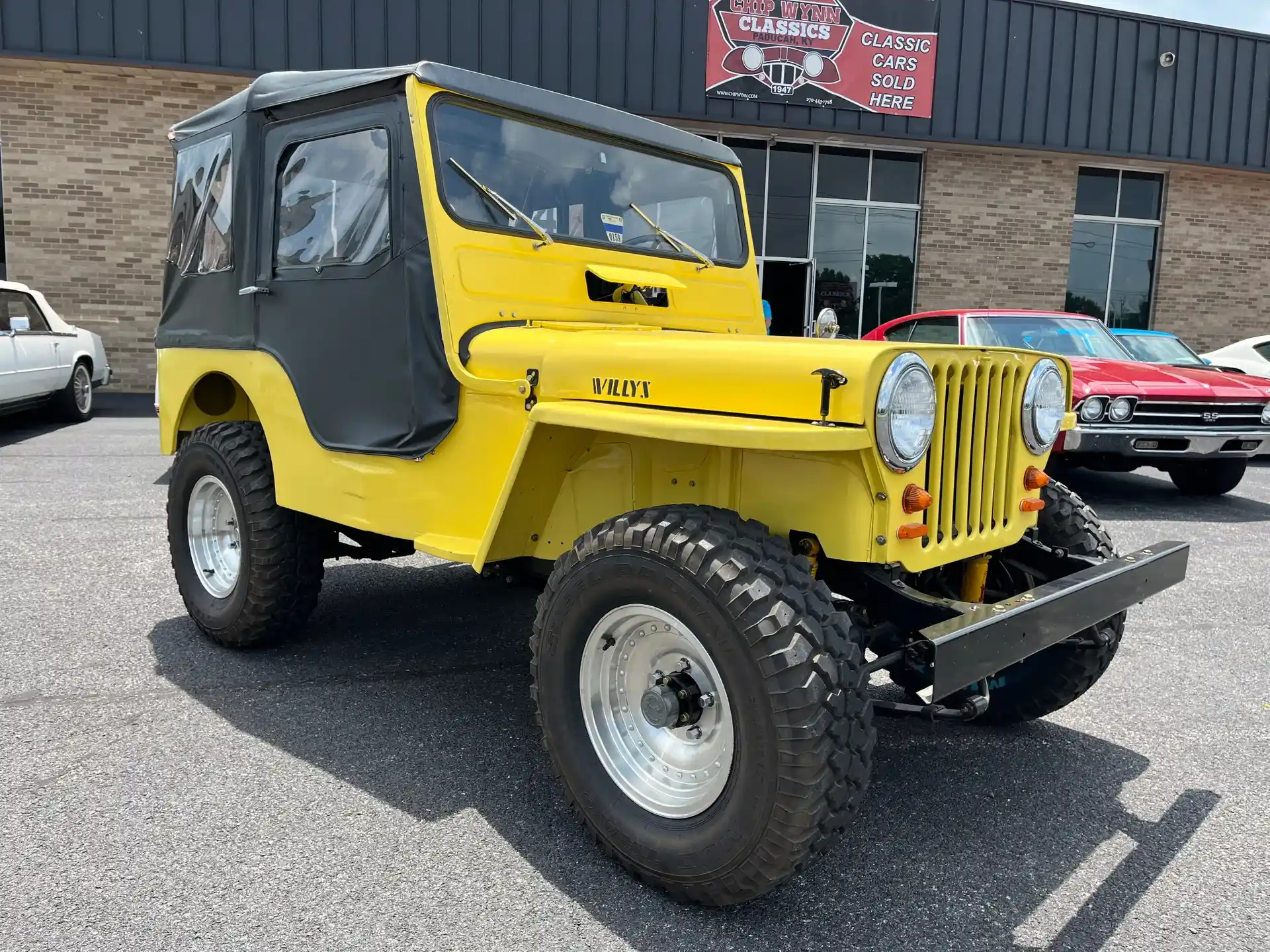
Key Considerations When Buying a 1948 Willys Jeep
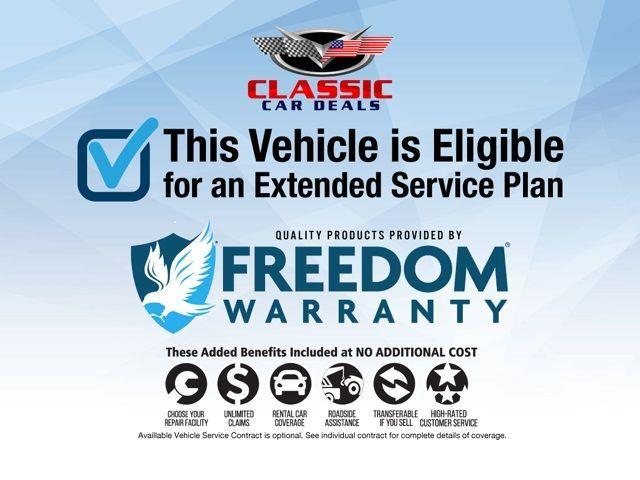
When you encounter a "1948 Jeep Willys for sale," a thorough inspection is paramount. These vehicles are over 75 years old, and their condition can vary wildly.
1. Condition is King: What to Inspect
- Rust: The ultimate enemy of vintage steel. Check every panel, especially the floorboards, toolboxes under the seats, rear bed, fenders, and the frame. Pay close attention to areas where water and dirt accumulate. Frame rust is particularly critical.
- Engine (Go-Devil L-Head 4-Cylinder):

- Oil Leaks: Some seepage is common, but excessive leaks indicate worn seals.
- Compression: A compression test is vital to assess engine health. Look for even compression across all cylinders.
- Running Condition: Does it start easily? Does it idle smoothly? Are there unusual noises (knocking, ticking)?
- Cooling System: Check for radiator leaks, condition of hoses, and water pump function.
- Drivetrain (Transmission, Transfer Case, Axles):
- Transmission: Test all gears (3-speed manual), listen for grinding or popping out of gear.
- Transfer Case: Engage 2WD, 4WD High, and 4WD Low. Listen for grinding or excessive noise.
- Axles: Check for differential leaks and excessive play in the U-joints.
- Brakes: These are drum brakes. Check the pedal feel (should be firm), look for leaks at the master cylinder and wheel cylinders, and ensure it stops straight.
- Electrical System: Most original Willys Jeeps are 6-volt systems. Check for functioning lights, horn, gauges, and starter. Many have been converted to 12-volt for easier starting and accessory compatibility – note this as it impacts originality.
- Steering & Suspension:
- Steering Play: Excessive play in the steering wheel indicates worn components (steering box, tie rods, drag link).
- Suspension: Check the leaf springs for cracks or sagging. Test shocks.
- Tires: Ensure tires are roadworthy and correctly sized. Period-correct bias-ply tires offer authenticity but may handle differently than modern radials.
- Originality vs. Modifications: Decide if you want a historically accurate vehicle or one with modern conveniences. Common modifications include 12V conversions, engine swaps, power steering/brakes, and modern seats. Each modification impacts value and authenticity.
2. Documentation and Title
Always ensure the vehicle has a clear, transferable title. Verify the VIN (Vehicle Identification Number) matches the title. Any service records or historical documentation add significant value.
3. Purpose of Purchase
Are you looking for a show vehicle, a daily driver, an off-road toy, or a restoration project? Your intended use will dictate the level of condition and originality you should seek.
Restoration vs. "As Is" – Weighing Your Options
The market for 1948 Willys Jeeps offers a spectrum of conditions:
- Fully Restored/Show Quality: These command the highest prices. They have been meticulously brought back to (or better than) original specifications, often with significant investment in time and money. Little to no work needed, ready for shows or immediate enjoyment.
- Good Original/Driver Quality: These are solid, functional vehicles that may have some patina, minor imperfections, or older restorations. They are reliable drivers and can be enjoyed immediately, with potential for future improvements. This is often the sweet spot for enthusiasts.
- Running Project: The engine runs, but the vehicle needs significant mechanical or cosmetic work. Lower upfront cost, but be realistic about the time, skill, and money required for restoration.
- Parts Vehicle/Barn Find: The lowest cost option, often non-running, with significant rust or missing parts. Best suited for experienced restorers or those seeking parts for another project.
Navigating the Purchase Process
-
Where to Look:
- Online Marketplaces: eBay, Hemmings Motor News, Bring a Trailer, ClassicCars.com, Facebook Marketplace.
- Specialty Forums & Clubs: Willys Jeep forums (e.g., The CJ2A Page Forum) are excellent resources for finding vehicles and expert advice.
- Classic Car Dealers & Auctions: Reputable dealers specializing in vintage vehicles, or auctions like Mecum and Barrett-Jackson, can offer curated selections.
- Word-of-Mouth: Sometimes the best finds come from fellow enthusiasts.
-
Pre-Purchase Inspection (PPI): For any vehicle you’re serious about, especially if buying sight-unseen, invest in a PPI by a qualified mechanic specializing in vintage vehicles. This can save you thousands in unexpected repairs.
-
Negotiation: Do your research on market values for different conditions. Don’t be afraid to negotiate, especially if you identify issues during inspection.
-
Shipping: Factor in shipping costs if the vehicle is not local. Get quotes from reputable classic car transporters.
The Ownership Experience: Life with a Willys
Owning a 1948 Willys is a unique journey:
- Driving Characteristics: Expect a raw, connected-to-the-road experience. No power steering, no power brakes, and a top speed around 45-55 mph. It’s not a highway cruiser, but it excels on back roads, trails, and around town.
- Maintenance: While simple, it requires regular attention. Learn basic mechanics, fluid checks, and lubrication points. A good service manual is invaluable.
- Parts Availability: Surprisingly good! Due to the Willys’ long production run and popularity, many reproduction and NOS (New Old Stock) parts are available from specialized vendors.
- Community: The Willys/Jeep community is passionate and helpful. Joining online forums or local clubs provides a wealth of knowledge, support, and camaraderie.
- Insurance: Consider classic car insurance, which often offers better coverage and lower premiums than standard auto insurance for vintage vehicles.
Potential Challenges and Solutions
- Rust: Ongoing vigilance is key. Address any new spots quickly. Proper storage (dry garage) is crucial.
- 6V Electrical System: Can be finicky. Ensure good grounds and clean connections. A 12V conversion is common for reliability but impacts originality.
- Speed & Safety: These vehicles lack modern safety features (airbags, crumple zones). Drive defensively, be aware of your limitations, and avoid high-speed roads.
- Parts Sourcing: While good, some specific trim pieces or very rare components can be hard to find. Persistence and networking are key.
- Finding a Mechanic: Not all mechanics are familiar with vintage vehicles. Seek out shops specializing in classics or learn to do much of the work yourself.
1948 Jeep Willys For Sale: Estimated Price Guide
The price of a 1948 Jeep Willys can vary significantly based on condition, originality, history, and location. This table provides a general estimate:
| Condition Category | Description | Estimated Price Range (USD) | Key Factors Influencing Price |
|---|---|---|---|
| Parts Vehicle / Barn Find | Non-running, significant rust, missing major components, or severely damaged. Primarily for parts or a complete ground-up restoration. | $2,000 – $6,000 | Extent of rust, presence of engine/transmission, completeness, clear title status. |
| Running Project | Engine runs, possibly drives, but needs significant mechanical, electrical, or body work (e.g., rust repair, brake overhaul, wiring). | $7,000 – $15,000 | Engine health (running, but may need rebuild), frame integrity, completeness of major components, how much work is immediately needed. |
| Good Original / Driver | Starts, runs, drives reliably. May have some patina, minor cosmetic flaws, or an older amateur restoration. Suitable for immediate use. | $16,000 – $28,000 | Overall mechanical reliability, minimal rust, functioning systems, decent paint/interior, originality of major components (engine, drivetrain). |
| Restored / Show Quality | Professionally restored to near-original (or better) condition. Excellent paint, pristine interior, fully sorted mechanics. Ready for shows. | $29,000 – $45,000+ | Quality of restoration (professional vs. amateur), documented history, originality (matching numbers), rarity of specific options, awards won, current market demand. |
Note: These are estimates and actual prices can fluctuate based on market demand, location, and specific vehicle details.
Frequently Asked Questions (FAQ)
Q1: What’s the main difference between a 1948 CJ-2A and a later CJ-3A?
A1: The 1948 Willys is a CJ-2A. The CJ-3A (introduced in 1949) featured a slightly taller windshield (one-piece vs. two-piece on the CJ-2A), a redesigned dashboard, and some minor mechanical updates, but largely retained the CJ-2A’s core design.
Q2: Is it hard to find parts for a 1948 Willys?
A2: Surprisingly, no. Due to their popularity and the simplicity of their design, many mechanical and body parts are reproduced or available as New Old Stock (NOS). Specialized Willys parts suppliers are readily available online.
Q3: Can a 1948 Willys be a daily driver?
A3: While mechanically capable, it’s generally not recommended as a daily driver in modern traffic. Its top speed is limited, it lacks modern safety features, and the driving experience is quite raw. It’s best suited for recreational use, local errands, or as a weekend vehicle.
Q4: What’s the top speed of a 1948 Willys?
A4: Most stock 1948 Willys Jeeps with the Go-Devil engine will comfortably cruise at 45-50 mph, with a maximum speed around 55-60 mph under ideal conditions. Pushing them faster can cause excessive wear and noise.
Q5: Is it safe to drive a 1948 Willys?
A5: It’s as safe as any vehicle of its era. It lacks modern safety features like airbags, seatbelts (often added aftermarket), ABS brakes, and crumple zones. Drive defensively, anticipate traffic, and be aware of its limitations.
Q6: Should I convert a 6-volt system to 12-volt?
A6: It’s a common modification that makes starting easier, allows for modern accessories (radio, phone charger), and simplifies finding replacement electrical components. However, it compromises originality. If you’re aiming for a historically accurate restoration, stick with 6-volt.
Q7: How much rust is too much?
A7: Frame rust is the most critical. If the frame is severely rusted or compromised, it’s a major structural issue. Surface rust on body panels is manageable, but extensive perforation will require significant (and costly) metal work.
Conclusion
The 1948 Jeep Willys is more than just an old vehicle; it’s a living legend, a testament to American ingenuity and a symbol of rugged individualism. For those seeking a connection to automotive history, a unique driving experience, and a vehicle that sparks joy and conversation wherever it goes, a "1948 Jeep Willys for sale" represents an unparalleled opportunity.
While owning one requires a realistic understanding of its limitations and the potential for maintenance, the rewards far outweigh the challenges. The satisfaction of driving, maintaining, and even restoring one of these iconic machines is a deeply fulfilling experience. Take your time, do your research, inspect thoroughly, and you could soon be the proud owner of a truly timeless piece of American heritage.
